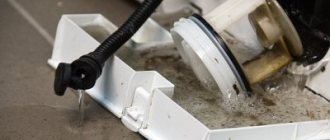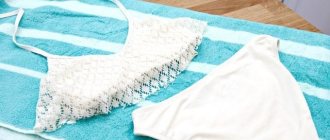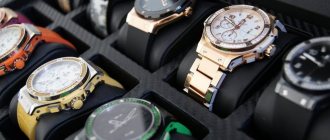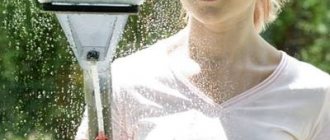Aquarium fish need clean water. It's a matter of survival. Waste products are released into the surrounding fluid. This makes it toxic. The fish breathe it again and receive a dose of toxic substances - ammonia, nitrates, nitrites. Over time, the concentration increases. The inhabitants of the aquarium get sick and die. The water looks clean. Therefore, it is necessary to regularly clean the aquarium and change its water.
Another reason is overgrowth. It is also associated with waste products, rotting food debris, and microorganisms. The glass becomes covered with dirt and algae. The water becomes cloudy. The filter becomes clogged and stops working. The life of the fish becomes unbearable.
How to clean an aquarium?
To do this you will need a certain set of tools. Detergents are used every few cleanings. In addition, you need clean, fresh water and a container where you can place the aquarium inhabitants and plants.
Aquarium cleaning tools
- First of all, you will need a net. They catch flora and fauna.
Interesting fact: a small net is easier to manipulate in the water, a larger one is easier to catch fish. The choice of net depends on personal convenience.
- To clean the walls you need a special scraper. Different materials require different scrapers; there are separate types for cleaning corners and stubborn dirt. You need a set of several scrapers or a universal tool with interchangeable attachments. This will allow you to achieve better cleanliness and ensure the prevention of various diseases.
- To clean the soil from waste, a siphon is needed. This is a specially designed container with a hose. The soil is scooped up with a siphon, water and waste flow down the hose, and heavier materials remain in place.
- A bucket, preferably several, is used in different ways. Dirty water is poured into it and clean water is poured out of it. You can put fish in it while cleaning. The bucket into which the aquarium is drained should be used only for this purpose, so that toxic substances do not get anywhere else.
Detergents
There is often advice to use bleach or “whiteness”.
Attention! It is prohibited to wash the aquarium itself with them! Getting even a small amount of such products into the water will kill all the fish. Bleach is used in exceptional cases and only for cleaning decorations.
A less dangerous analogue is hydrogen peroxide. The ideal solution is plain water. Only it definitely won’t harm the inhabitants. For particularly difficult stains, boiling water is used.
Baking soda, potassium permanganate, and washing powder solution are used to disinfect the tank.
It is acceptable to use chemical cleaners on the outer walls of the aquarium. The procedure should be performed carefully and carefully. Special napkins for glass and napkins for monitors are also suitable.
Before starting work
Before you start cleaning the aquarium, you need to prepare the necessary equipment. For this use:
- scrapers for removing plaque from walls - with a metal blade (simple or magnetic) or plastic (for acrylic aquariums);
- siphon for cleaning the soil;
- washcloths;
- sponges;
- bucket or large bowl;
- net (if you plan to wash and plant fish).
The processing sequence is usually as follows:
- Clean the walls of the tank from silt, protozoan algae, and minor lime deposits;
- Wash the existing decor (shells, pebbles, driftwood, grottoes).
- Carry out care for existing plants (if any) - as necessary.
- Clean the soil using a siphon - if necessary.
- Drain some of the dirty water.
- Clean the filter as necessary.
- Wash the outside walls.
- Add new water.
It should be remembered that general cleaning - with the removal of fish, a complete change of water and the use of special detergents - is carried out quite rarely: only in the event of an epidemic or the need to remove limestone in large quantities. The rest of the time, they usually carry out simple regular cleaning - without removing the living creatures, without draining all the water, and in no case using cleaning chemicals: it can be dangerous for the fish.
We recommend: In dark corners and under the bed: how to easily clean the baseboard without moving the furniture
How to properly clean an aquarium in a planned step-by-step manner
A routine cleaning of an aquarium involves several parts: cleaning the bottom, walls, decorations, filter (if necessary) and adding water. The aquarist’s movements should be smooth so as not to frighten the inhabitants.
Note! During scheduled cleaning, fish are not removed. This will cause more stress than cleaning. In addition, a sharp change in the composition of the water has a very bad effect on the health of fish.
The soil and bottom of the aquarium are cleaned last. As a result of previous actions, dirt and algae settle right there. Washing the soil removes debris and completes maintenance.
How to clean the walls of an aquarium
The walls are cleaned with special scrapers or a sponge without the use of cleaning agents. Particular attention must be paid to the corners. The type of tool depends on the material of the aquarium: glass is difficult to scratch, but for acrylic you will have to use the softest surface.
To begin with, the aquarist cleans the walls of the container from plaque. Next comes the turn of seams, corners and the ground area. If there is a lid, it is convenient to remove it and rinse the whole thing under running water.
It is usually enough to rinse the outer walls with warm water and wipe dry. A sponge will help with heavy dirt. Wipes for glass or monitors are safe and will eliminate streaks. You can use liquid to clean glass. If the aquarium does not have a lid, glass cleaners must be used carefully. The product is applied to half the walls, then distributed manually. Wipe the container with paper, newspaper without pictures, soft cloth, microfiber cloths.
Scenery
Stone and artificial plants are cleaned with running water and a sponge. For more severe stains, boiling water is used. Hydrogen peroxide and bleach are used only in extreme cases. Bleach must be diluted with water in a ratio of 1:9.
Important! After using cleaning products, rinse items thoroughly before placing them in the aquarium. Even a small amount of bleach will cause the death of all fish. Unwashed peroxide will disintegrate in water, but it will still not be beneficial for your pets.
Poor quality decorations can be damaged by bleach. Also, they cannot be used to process objects made of silk.
Only water is used to clean natural scenery. Some experts recommend not washing them at all. It’s really better not to even move snags and branches. The algae growing on them is often decorative and serves as food for some fish. Corals should not be moved either. But the stones need careful processing. If there is a lot of debris on the corals and branches, the problem is usually due to improper organization of the aquarium. Lack of space, too many fish, too much feeding - these are the things that need to be corrected first. If the tank becomes overgrown with algae too quickly, you need to fight the cause, not the effect.
Plant treatment
Many aquarium plants are easy to care for. They need to be cut and weeded. Trimming must be done regularly as algae grows quickly. Plants with long stems are most decorative from above, and timely pruning will preserve their appearance. Weeding is done carefully, without approaching the stem directly.
Some plants reproduce by layering. They will quickly fill the entire aquarium. If this scenario is undesirable, the cuttings should be removed at each scheduled cleaning.
Yellowed, fallen, rotting parts of algae must be removed. For these purposes it is convenient to use a narrow net.
Equipment
Timely cleaning of the filter is important for the well-being of the fish. The water pressure signals the need to do this. If it has become weaker, the device must be processed. It is clogged with food debris, algae and limescale.
The internal filter is the easiest to clean. You just need to rinse it under running water. Some people recommend using aquarium water for this so that the bacteria living on the filter do not die. However, these bacteria normally live in the soil. If the filter is washed with plain water, microorganisms will very quickly repopulate it. You will also need to clean the body of the device from algae and plaque.
You will have to clean the motor itself and its impeller somewhat less often. They are wiped with a clean dry cloth.
Be careful! Before disassembling the filter, disconnect it from the power supply.
Low-power filters in small aquariums must be treated with every scheduled cleaning. Stronger ones - every other time. Experts do not achieve perfect cleanliness when washing the filter. It will only harm the fish.
Some filter parts need to be replaced from time to time. There are disposable membranes that will have to be changed every week. Special sponges built into the device are replaced less frequently. If they are falling apart, it's time to buy new ones. The lifespan of the filter itself is also limited. At a certain point it stops being cleansed. You cannot treat it with detergents; you need to buy a new one.
The external filter is washed much less frequently. This is a more complex process. After disconnecting the device from the network, you must turn off the taps of the hoses, then separate the latter from the device. Next, the hoses, trays with filter filler, and the inside of the housing must be washed. This is convenient to do in the bath or shower. A narrow brush is suitable for hoses.
Afterwards the pallets must be placed back. Now comes the turn of the filter impeller. The housing is filled with water and the device is assembled. Hoses are connected. The aquarist then turns on the water supply and the electric current.
Important! When cleaning filters, do not use detergents! The smallest amount of cleaner will be distributed throughout the entire aquarium by the water flow. If the contamination is complex, hot water will help.
If the aquarium has a compressor, it also needs to be cleaned. Most often the hose becomes clogged. It can be cleaned or replaced. If the air filter is dirty, you will have to disassemble the device. You can wipe it from dust with a clean dry cloth.
The internal heating element is cleaned of algae. Usually you have to leave it on.
How to wash the soil in an aquarium
There is an opinion that aquarium soil must be cleaned by rinsing it with running water. Some beginners even heat it with boiling water. You can't do that. This will kill all beneficial microorganisms, disrupt the nitrogen balance in the aquarium and can lead to fish disease. Using a siphon is the correct way to clean.
Washing the soil too frequently should be avoided. This also has a negative effect on the fish. Cleaning once every two times will be sufficient.
How to clean the bottom of an aquarium
If there is no soil in the aquarium, the bottom is cleaned with a scraper. After which the waste layer is removed with a siphon.
Cleaning and adding water to the aquarium
Water change volumes are from 10% to 50% at a time. The frequency of water changes also varies. The water cannot be completely drained. Tap water won't work either. It contains too much chlorine. To purify water, it must be left for a day. Or you need to use special products such as air conditioners. Vitamins and mineral supplements will tailor the water exactly to the desired fish. Aquarium salt is used to obtain sea water.
Attention! If the water is cloudy, changing it completely can only make it worse.
If the liquid has deteriorated after adding fish or changing the water, it is usually enough to wait a few days. The sediment will settle to the bottom. If fresh water has not been added, the following options are possible:
- The filter has deteriorated or become dirty. It needs to be replaced or cleaned.
- Burrowing fish can lift a lot of soil from the bottom. They need a more powerful filter.
- The aquarium is overcrowded. You will have to put some of the fish in another container.
- Insufficient quality or too infrequent cleaning of the aquarium.
- Driftwood and branches release tannins when placed in water. They color the liquid and are liked by many fish. After some time, the tank will be clean again.
- Poor quality decorations are used. Poor quality varnish or paint can leach into the water, changing its color and poisoning the inhabitants. Such items must be removed immediately.
Removing stains from glass
The first thing that catches your eye is the transparency of the aquarium glass. If the glass is dirty, the view is not so impressive. But the problem can be solved quite simply, since there are two ways to clean the aquarium from limescale and algae deposits - mechanical and chemical.
The mechanical method of cleaning glass from plaque is acceptable in cases where fish are not being relocated from the aquarium. You can get rid of dirt using a glass scraper, or using the hard side of a regular sponge. Hard-to-reach areas can be cleaned with a new toothbrush with stiff bristles. The remaining algae deposit does not need to be removed from the aquarium; it will serve as food for the fish or will drain out when changing the water.
The method of cleaning glass using chemicals is acceptable when carrying out cleaning with transplanting the inhabitants into another container. It is very convenient to use special cleaning wipes, sold in pet stores, in the fight against plaque in such cases. They are impregnated with a chemical composition that can easily and quickly cope with limescale on the walls. After using them, it is necessary to rinse the container thoroughly so that the chemical does not remain on the glass and harm living organisms.
How to deep clean an aquarium with restart
Every aquarium needs a restart from time to time. It should not be carried out for prevention. Restarting an aquarium differs from the first start in that it is necessary to first sanitize the container and its contents.
Fish jigging
If the quality of the old aquarium water is sufficient, it is poured into a new container. The fish are transplanted there. Or use water that has been standing for at least two hours.
Important! You need to carefully monitor the behavior of the fish. Stress and changing conditions can cause illness or death.
Removing and washing plants and equipment
Living plants are washed with warm water and placed in a separate container. Filters and compressors are removed and thoroughly washed.
How to clean soil and decorations in an aquarium
To clean decorations in extreme conditions, it is acceptable to use bleach. Things must then be washed thoroughly. It is advisable to use boiling water. The soil is either replaced or processed. Processing consists of thoroughly washing the soil and calcining it in the oven.
Preparing and filling water
Water is prepared in the same way as during scheduled topping up. It is necessary to remember the concentration of various substances and compliance with PH, hardness and salinity.
Putting everything back in place
Starting the aquarium is carried out in the following order:
- Soil is laid out at the bottom.
- Suitable water is poured into the aquarium. The liquid level exceeds the ground level by about 10 cm.
- Plants and decor are placed.
- Equipment is being installed.
- Residents are starting.
- The water level is brought to the usual level in several steps.
- The equipment turns on.
The behavior of the fish must be carefully monitored at first.
We settle in assistants
To clean less often, you can place natural orderlies in the aquarium, who help clean the water and walls of your home pond. This will be done, for example, by ordinary guppies, as well as swordtails, goldfish, platies, ancistrus, and catfish. The structure of their mouth allows them to capture and eat small algae and plaque from the walls.
But not only these fish clean their homes. Snails and shrimp can help them. True, snails are very curious creatures, and if the aquarium is open at the top, they will periodically fall out of it (so it is better to purchase such residents for closed containers).
So, to keep your aquatic pets alert and healthy, it is important to properly care for your aquarium. If you use live assistants, you will have to clean the tank and disturb the aquarium animals less often.
Special cases of cleaning an aquarium
How to clean a large aquarium at home
Magnetic scrapers are available for cleaning deep aquariums. One part of the device is placed in the water, the other on the other side of the glass controls its movements. This allows you to clean hard-to-reach places. Your hands won't get wet. There is no point in pulling large decorations out of the water. It is enough to wipe with a sponge before treating the soil. Small ones can be reached with a manipulator. A hose is used to add water.
How to clean a small aquarium
The only difficulty here is soil treatment. For a small aquarium with a volume of 10-20 liters, the siphon is too large. It will drain half the water or more. You need to cut it in half and insert a small tap inside. You can buy one in the garden products section. You can also use any narrow tube. There are compact, low-power siphons on sale specifically for small aquariums.
How to clean an aquarium with fry
This aquarium lacks decorations and soil. However, a lot of dirt accumulates. The reservoir becomes covered with dirt and mucus. It is removed with a sponge. You need to take a small siphon.
Note! A siphon with a tube of standard width can suck in the fry. You can catch it with a net. It is preferable to use a tube for small aquariums.
How to properly clean an aquarium that hasn't been cleaned for a long time
If there are no fish in the aquarium, the tank is subjected to standard processing and restarting. If there are fish, they have adapted to live in dirty, toxic water. A sudden change of fluid to a more suitable one will kill them. The replacement is carried out gradually, no more than 10-15% at a time. When cleaning, it is important to stop in time. Fish that are not used to it will panic and may harm themselves. You shouldn't do everything at once. The most important thing is to clean the filters and soil.
How to clean an aquarium in emergency situations
In extreme situations, such as illness or death of fish, deep processing is required. Cleaning agents and boiling water are used. The soil and decorations should be changed, the equipment should be thoroughly cleaned. Living plants are planted in a separate container for a month or three. They are undergoing quarantine.
The aquarium itself needs to be filled with potassium permanganate or a solution of bleach or washing powder. Keep it like this for a day and rinse thoroughly.
Gyrinocheilaceae
Girinocheylidae come from the carp family. Fish of this species eat plant matter both from the bottom surfaces and from the walls of the container. Considered one of the best algae fighters. They do not require special conditions of detention. In captivity they grow no more than 15 cm. The body is elongated. Reproduction is possible only in specialized nurseries. For maintenance they require additional feeding with plant foods.
Hyrinocheil fish, which clean the aquarium, have the following characteristics:
- Life expectancy in captivity is at least 10 years.
- Behavior is closer to the aggressively territorial type.
- Daytime lifestyle.
- The structural feature is that the lips are suction-shaped.
Varieties of Gyrinoheilaceae:
- Ordinary. Yellow, olive color with black specks.
- Siamese. Spotted color of orange, yellow shades.
- Gold. The body is golden in color with dark spots.
- Yellow. The main difference from the golden gyrinocheilus is the uniform yellow color, without spots or tints.
- Albino. Body color is pale pink.
- Marble. Pale brown color with black spots.
The species differ only in color; the conditions of detention and behavior are basically similar.
Minuses:
- Do not destroy red algae - blackbeard, Vietnamese.
- If the main food runs out, higher plants can eat up.
- Possible aggressive behavior towards other floating inhabitants.
Diseases:
- Obesity. The reason is an excess of additional feed.
- Fish of this family are susceptible to infectious diseases. They can become infected with parasites from other inhabitants of the aquarium.
- Poisoning and oxygen starvation are possible. The reasons are contamination of the added water with nitrate and ammonia compounds.
Tips for care and use.
How to prevent contamination so as not to wash the aquarium frequently
Maintenance must be carried out regularly. Cleaning too often and too hard will harm the fish, and too infrequently too. Cleaning products should only be used as a last resort. There should not be too many animals in the tank. There is no need to overfeed them. Equipment must be maintained in good condition. Part of the water is changed regularly. The soil should be siphoned, not washed. The main condition is attentive, but not excessive care.
How to clean the soil in an aquarium with a siphon
The end of the siphon hose must be directed into an empty bucket. Use the neck to scoop up the top layer of soil. The waste, along with some of the water, will fall into the bucket. You can't do this too carefully. It is enough to walk along the bottom once and remove what can be easily removed.
Attention! Some caution is required during the procedure. It can pull fish inside. This will not harm the small fish. It will go into a bucket where it will be easy to get out. But a large one, resisting the movement of water, can damage the fins. You should not point the siphon directly at the inhabitants of the aquarium.
If there are live plants in the tank, only the exposed areas need to be cleaned. If there are decorations and shelters, it is imperative to clean underneath them. This is where the most waste accumulates.
How to recognize aquarium pests and get rid of them
Any shellfish pose a threat to the aquarium, as they quickly pollute it. This is especially true for snails. They feed on fish food and actively reproduce. They can be removed by hand or using snail traps. These are sold in specialized stores.
Three types of algae pose a danger to an aquarium: brown, green and blue-green. To get rid of the first two, you need to adjust the tank lighting. Brown algae appears in dark water and looks like a brown coating. Greens multiply when there is too much light and make the water green and cloudy. If there are too many of them, residents can suffocate.
Attention! Algae reproduce only with sufficient food. Do not overfeed fish or keep many in one container. Timely cleaning is required.
Blue-green algae cover objects with a film. They are toxic to fish and steal light from plants. It's hard to get rid of them. The films are removed by hand or with a sponge, and the water is often replaced. Only restarting the aquarium is guaranteed to help.
If other algae appear in the aquarium, you can remove them physically.
Biological methods for cleaning an aquarium
Tetradons, loaches and Helena snails feed on other snails and clean the aquarium of them. Loricaria catfish eat rotting wood. Algae eaters and Amano shrimp will help get rid of algae.
We must remember that they are all living beings, just like other pets. They need to be looked after and their behavior monitored.
Cleaning an aquarium is a process that often intimidates beginners. There are many operations to be carried out and many parameters to be taken care of. Cleaning is slow at first, but over time it will take 30-40 minutes per week. A happy, healthy fish will please you much longer.
How often do you clean the aquarium, what equipment do you use? Write to us in the comments!
When not to siphon
- Rarely do they clean aquariums that are completely planted and contain small amounts of small fish and shrimp. The absence of acidification is due to the fact that plant roots penetrate all layers of soil and release oxygen. The released oxygen eliminates the formation of anaerobic zones. The exception is small and weak roots in combination with fine soil laid out in a thick layer. To control the situation, you should periodically check the soil, loosening it with a thin stick.
- It is forbidden to siphon a newly launched aquarium; it will be possible to siphon it no earlier than after 14 days. It is necessary to first grow a colony of nitrifying bacteria in the reservoir; only water changes are allowed.
- It is prohibited to use a siphon to clean herbal aquariums that are densely planted. The siphon will upset the balance, depriving the plant roots of the necessary nutrition. Cleaning helps to raise sludge, which releases harmful substances into the water, including ammonium. Another feature of the herbalist is the nutrient substrates, which are washed away during cleaning, losing their benefits.
We process plants
Artificial water tanks designed to house fish almost always contain a large amount of vegetation. Plant waste products are one of the causes of aquarium clogging. Rotten leaves settle to the bottom and accumulate if they are not removed for a long time. This promotes the proliferation of pathogenic microorganisms.
Note! It is not recommended to transplant plants to another place if they have been located in another area of the aquarium for a long time. You should also remember that spoiled leaves must be removed immediately.
Some plants can grow significantly over time. It is recommended to remove them, as they make it difficult for fish to move freely inside the glass tank.
Interesting: How to build a gazebo at your dacha with your own hands
Features of using aquarium salt
Sea salt, unsuitable for food, has found use in aquariums. Problems related to fish health can be solved with salt:
- used in stressful situations.
- during transportation;
- the effect of salt affects osmoregulation.
Salt changes the quality of water.
How to care for salt water aquariums
To prepare sea water, distilled or double purified liquid is used. Simply standing up will not be enough.
Care:
- measure parameters every day;
- using pumps to simulate flow;
- partially change the water weekly;
- Clean the walls once a week;
- monitor equipment;
- regularly test water quality;
- Clean weekly from food debris and excrement.
Works globally are no different from a freshwater aquarium.
Cleaning equipment
Every aquarist has a tool that they use for cleaning. Conventionally, it is divided into a standard and individually specific set.
The first includes the necessary things: sponges, buckets, scrapers, hoses, siphons.
The second set includes additional tools: tweezers, acidity indicator, feeders, aquarium tests.
Water
You can't just draw liquid from the tap. It must meet certain parameters at which the fish will feel comfortable.
The indicator is used to check the pH acidity, the norm is considered to be 7. Soda is used to increase it, and peat is used to decrease it.
The smell of chlorine is eliminated. The water is left to stand for 3 days. If this does not help, use a dechlorinating agent.
For freshwater fish, it is not advisable to use distilled liquid, as it is considered “dead” water.
The upper layers of water from old aquariums are recommended; they have an established biological balance.
Glass scraper
To avoid putting your hand in while cleaning the glass inside the aquarium, it is convenient to use magnetic scrapers.
Algae deposits can be cleaned with a scraper that has a metal blade. You just have to be extremely careful not to snag the silicone sealant (wall connector) or scratch the acrylic.
If you wash your glass regularly, at least once every 7 days, an ordinary kitchen sponge will do. You just need to use a new copy, without any leftover food or fat.
Big bucket
When cleaning sand and pebbles from the aquarium, water and debris are drained. Therefore, you need to have a large bucket for collection.
You will also need a large bucket to settle the water. It is advisable to choose a neutral material - inert plastic, enamel. All other materials: zinc, aluminum, copper exclude. The reaction of elements produces harmful substances that cause imbalance and death of aquatic organisms.
“Mom, I crumbled a little here”: how to clean the keyboard from small dirt
Water pump
Among the tools there should be a pump. You can use a siphon-type pumping device.
The pump cannot be used on batteries.
Components for replacing the filter
Be prepared for the fact that you will need to replace some filter elements. Therefore there should be:
- spare sponges;
- coal packs;
- rings;
- balloons;
- rotary head;
- cartridges.
Vinegar
A special aquarium glass cleaner will help remove limescale from the glass, but if you don’t have it on hand, use wine vinegar. Take a glass of water, add a tablespoon of vinegar. Treat the glass with the solution. The acid does not leave streaks and quickly removes plaque.
Blade
Some scrapers have a blade. The material can be plastic, metal. When working with scrapers, you need to be careful, for example, acrylic aquariums are easily scratched.
Some models of scrapers have a combined filling. The blade is replaced with a sponge and vice versa.
Other necessary things
When cleaning the aquarium you will need no less necessary things:
- nets of different sizes;
- long tweezers for planting plants and lifting various parts from the bottom;
- siphon;
- feeders;
- fastening material – suction cups;
- measuring container for liquid;
- syringe, long needle for processing algae.
The necessary substitutes should be in stock: thermometer, heater, compressor. In case of failure of the main elements.
Soil disinfection
Disinfection is performed to prevent the spread of infectious diseases among fish. It is also recommended to do this if there have been cases of illness among the inhabitants of the aquarium.
Disinfection is carried out as follows:
- Transfer the fish and plants temporarily to another container.
- Remove the soil, rinse under strong water pressure (until the liquid becomes completely transparent without any inclusions of fractions).
- Place a container with soil and water on the gas stove. Boil for 20 – 30 minutes.
- Drain the water and spread the soil evenly onto a baking tray. Place in the oven for 20 - 30 minutes at a temperature of about 200 degrees Celsius.
Afterwards, let it cool and can be placed in the aquarium. Such treatment kills the entire spectrum of pathogenic and harmful bacteria. But using any “aggressive” drugs or alcohol for disinfection is prohibited. Aquarium soil has a porous structure, that is, it works like a “sponge”.
What tools to use
You can use various products to clean your aquarium. These are everyday items and strong household chemicals.
Soap
The very first remedy that comes to mind. You can wash the aquarium with soap. It helps get rid of minor stains.
"Domestos"
The cleaning product has a liquid consistency. A small amount helps get rid of limescale.
"Comet"
Helps clean the aquarium from any type of contamination. Release form: powder and spray. For best performance, it is recommended to take the powder form.
Soda
Thanks to small abrasive particles it helps to cope with algae residues. Eliminates plaque on the walls and waste from fish and other pets. Easily washed off with water. It is difficult to wash off chemical residues, especially if it is too aggressive. Such products should not get into the water. Otherwise, not only fish, crustaceans, and mollusks will die, but also the vegetation on the bottom.
Soil preparation after purchase
After purchasing soil for an aquarium, it must also be thoroughly washed. It is recommended to divide the entire package into small fractions (1–2 kilograms each). Next, rinse and bake in the oven for 30 minutes.
If you are using something other than purchased, then you need to let it settle beforehand. That is, step by step it looks like this:
- Rinse the soil.
- Treat it with an antiseptic. To do this, use either a solution of hydrochloric acid (25%) or hydrogen peroxide (1 to 15 with water).
- Leave the soil to settle in an empty aquarium for 1 month. This ensures that there will be no pathogenic bacteria left in it, affecting both the fish themselves and the plants.
It must be taken into account that after such treatment there are virtually no useful components left in the soil (with the exception of the inorganic base, most of which are minerals).
Types of siphons
All produced models of soil cleaners are divided into two large categories, with their own advantages and disadvantages. Let's look at each type in more detail:
| Kinds | Description |
| Mechanical | The device is very basic. Structural elements: hose, bulb for drawing in water, reservoir. Easy and simple to operate. Most models are made of durable plastic, transparent, so that you can control the cleaning process and react in time to small inhabitants of the aquarium getting inside. The main disadvantage is that you need to drain the water back. Cleaning involves monitoring the volume of collected liquid, which should be no more than 30%. The drained water settles and is refilled. The main advantage is an acceptable average price. |
| Electrical | A distinctive feature from its brother is the absence of a tank and hose. The collected liquid is purified and returned back to the tank. The main design elements are the motor and the funnel. Doesn't take up much free space. The disadvantage is the possibility of sucking in small fish. If you have a large number of fry, you should take care of purchasing an electric siphon with a mesh. The mesh will not allow fry and small pebbles to get inside. The devices can operate on mains power or on batteries. Battery-powered structures are purchased if they are intended to be immersed to a depth of no more than half a meter. For siphons operating from the mains, there are no such restrictions. The main thing is to praise the length of the cord plugged into the outlet. |
Any soil cleaner requires certain cleaning and storage conditions. At the end of the procedure, the unit is disassembled and washed under running water using detergents. Thorough flushing is mandatory, as the cleaners used can adversely affect the health of the tank's inhabitants. The hose is stored rolled up. This will help minimize the possibility of cracks and wrinkling.
To prevent electrical siphons from shorting, you need to protect the sockets from getting wet.











